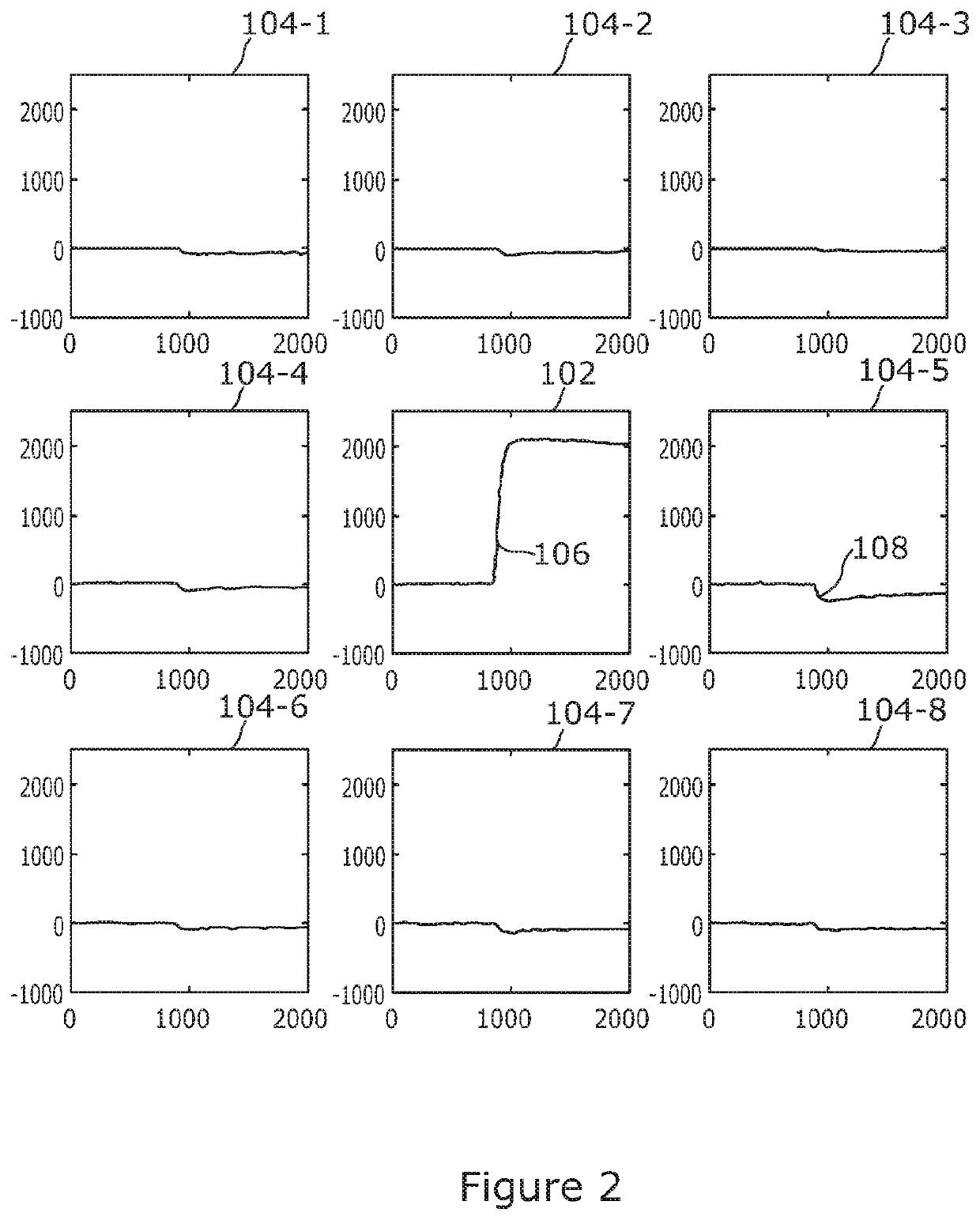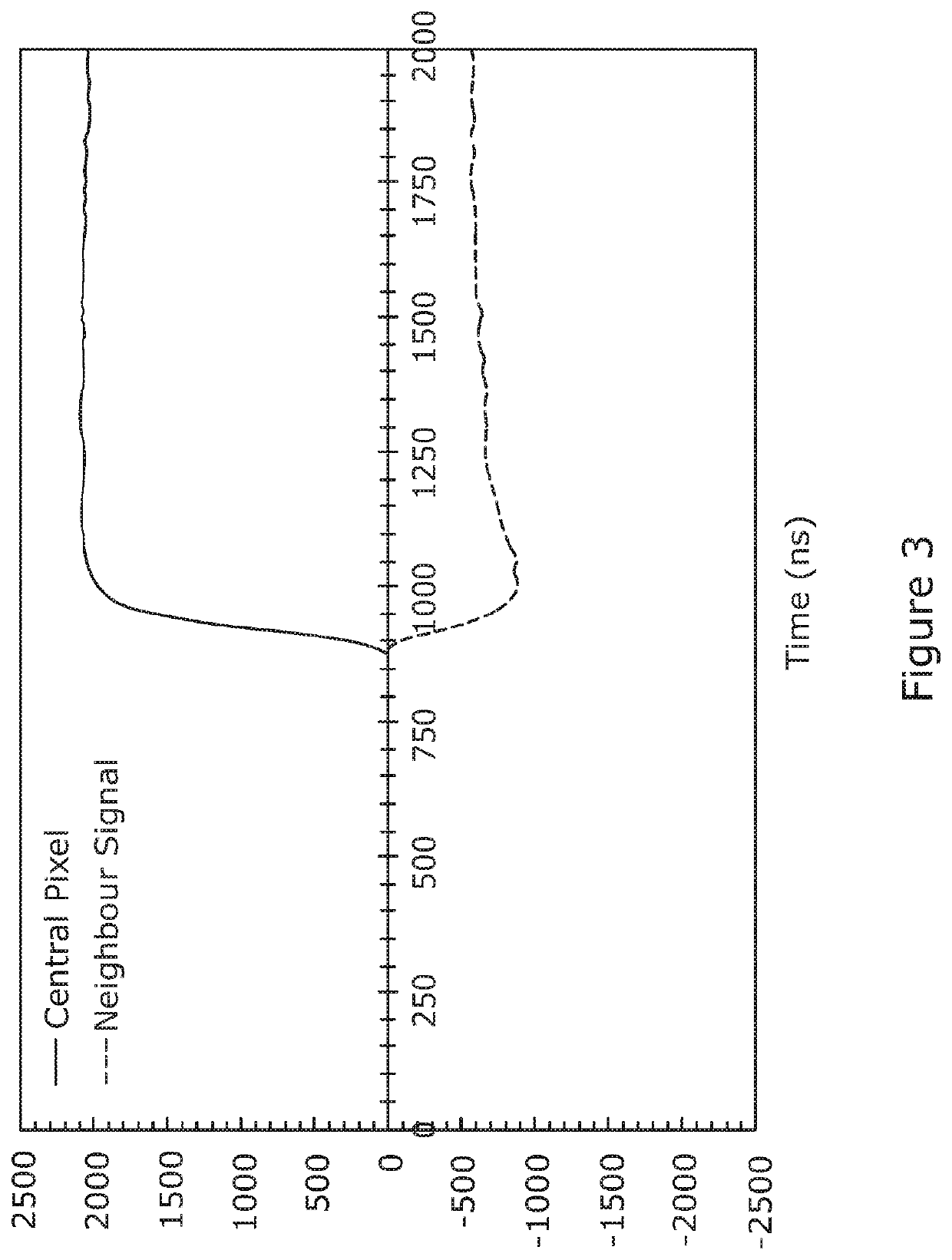Depth correction in pixellated detectors of ionizing radiation
a detector and depth correction technology, applied in the direction of radiation measurement, instruments, measurement devices, etc., can solve the problems of limiting the overall rate of interaction events, difficult to distinguish in the cathode signal, and the over-inverse dependence of cce on interaction depth
- Summary
- Abstract
- Description
- Claims
- Application Information
AI Technical Summary
Benefits of technology
Problems solved by technology
Method used
Image
Examples
Embodiment Construction
[0053]Referring now to FIG. 1, a schematic view is shown of a spectroscopic imaging sensor 5 for detecting particles or photons of ionizing radiation 22, such as Gamma rays or X-rays, and in particular such sensor which can output information about spectral properties of that radiation with lateral position information, for example in the form of a pixelated image. Typical uses for a spectroscopic imaging sensor of ionizing radiation such as that of FIG. 1 are situations where spectroscopic X-ray imaging is required, for example in medical, security, astronomy, and industrial imaging areas.
[0054]The sensor 5 includes a detector portion 10 and an application specific integrated circuit 40 (ASIC) arranged to process electrical signals from the detector 10. The detector comprises a semiconductor layer 20 into which ionizing radiation 22 to be detected enters at a front face 24 of the layer 20. At least some of the ionizing radiation interacts with the material of the semiconductor laye...
PUM
 Login to View More
Login to View More Abstract
Description
Claims
Application Information
 Login to View More
Login to View More - R&D
- Intellectual Property
- Life Sciences
- Materials
- Tech Scout
- Unparalleled Data Quality
- Higher Quality Content
- 60% Fewer Hallucinations
Browse by: Latest US Patents, China's latest patents, Technical Efficacy Thesaurus, Application Domain, Technology Topic, Popular Technical Reports.
© 2025 PatSnap. All rights reserved.Legal|Privacy policy|Modern Slavery Act Transparency Statement|Sitemap|About US| Contact US: help@patsnap.com



